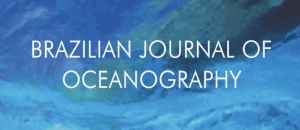By Ana Maria Setubal Pires Vanin, Departamento de Oceanografia Biológica do Instituto Oceanográfico da USP, SP, Brasil
The article entitled “Effects of structural factors on upwelling fouling community” published in Volume 64, Number 4, of Brazilian Journal of Oceanography presents changes in hydrological characteristics associated with depth and light in a seasonal upwelling environment allowed for the formation of multiple stable states in the system. Besides, interactions for food and shelter between carnivorous, invertivorous and omnivorous fishes and the fouling community were observed, which highlights the importance of predation in biofouling succession.
Multi-experiments were employed by researchers working together at State University of Rio de Janeiro, State University of North Rio de Janeiro and Institute of Sea Research Admiralty Paulo Moreira to investigate the structuring factors of fouling communities in the tropical upwelling ecosystem of Cabo Frio, southeastern Brazilian coast, by monitoring their successional trajectories on experimental panels, and simultaneously investigating the effects of depth, orientation of the substrate and fish predation.
The Cabo Frio region is subject to the seasonal upwelling of cold water that brings to the área temperatures below 18°C. In those events the stratification of the water column occurs with the intrusion of cold, nutrient-rich waters even in shallower places. The intensity of that intrusion varies along the year, but generally reaches the maximum intensity during austral spring and summer. Fall and winter are periods with low frequency of upwelling events and is when intense water mixing takes place leading to a homogenization of the water column. According to some authors, the intensity and frequency of seasonal upwelling events might affect the environmental variability and may influence the level of stress that the fouling community experiences, with divergent successional trajectories.
Oceanographic changes with ecologically significant consequences, such as variations in the supply of food, may occur in seasonal upwelling regimes. The supply of nutrients for plankton and benthic micro and macro algae, and consequently filtering organisms, has a marked influence on bottom-up control of trophic systems and therefore on the structure and dynamics of marine benthic communities, as have been pointed out by many authors. In the region of Cabo Frio, studies have suggested that the increased concentrations of nutrients during upwelling events can sustain greater algal biomass.
The novelty of the present study is the multi-experimental approach that maximizes the amount of general information concerning the main structuring factors of the community, allowing for the assessment of the influence of a single factor and the ones to be considered in future multiexperimental designs. “Additionally, experiments conducted in upwelling ecosystems also help to further elucidate the connections among pelagic and benthic processes” claim the authors.
Five multi-experiment units were affixed to the substrate and each individually supported three experimental PVC panels (20 × 15 cm) at approximately 1.5 and 3.5 m. Effect of fish predation was tested at the 3.5-m depth and included open panel, freely accessed by fish; fully caged panel, to exclude fish, and partially caged panel. The experimental panels were followed by 12 months.
The results point out that the greatest differences in temperature between depths occurred in the austral spring-summer period. This stratification in the water column indicates the high frequency of upwelling events during this period. The dissimilarity between the associations at the 1.5- and 3.5-m depths increased along the successional trajectory, showing that the successional trajectories do not converge at the different depths. The effect of the substrate orientation on the fouling community was significant. The dissimilarity between the communities of the upward- and downward-facing surfaces of the panels increased along the successional trajectory and reflected the biota composition. It was a clear dominance of sessile invertebrates, especially Schyzoporella errata in the more shaded environments, and the dominance of photophyla species, mainly Jania sp., on the upward-facing panels.
The fouling community included seven taxonomic groups of invertebrates and six functional groups of algae. Qualitatively, 12 species of fishes and five trophic categories were recorded with the dominance of omnivores. The results suggest that the high predation intensity and their effects on the benthic composition are related to the predators’ trophic habit.
The authors conclude the article considering that each physical factor can alter the trajectory of succession and, consequently, the composition of the community. Therefore, the final fouling community stage is not predetermined but guided by intrinsic and extrinsic factors, which will act as driver factors of the changes in the successional model.
To read the article, access it
MASI, B.P., ZALMON, I. and COUTINHO, R. Effects of structural factors on upwelling fouling community, Southeast Brazil. Braz. j. oceanogr. [online]. 2016, vol. 64, n. 4, pp. 387-400 [viewed 06 January 2017]. DOI: 10.1590/s1679-87592016128706404. Available from: http://ref.scielo.org/tst83c
External link
Brazilian Journal of Oceanography – BJCE: <http://www.scielo.br/bjoce>
Como citar este post [ISO 690/2010]:













Recent Comments